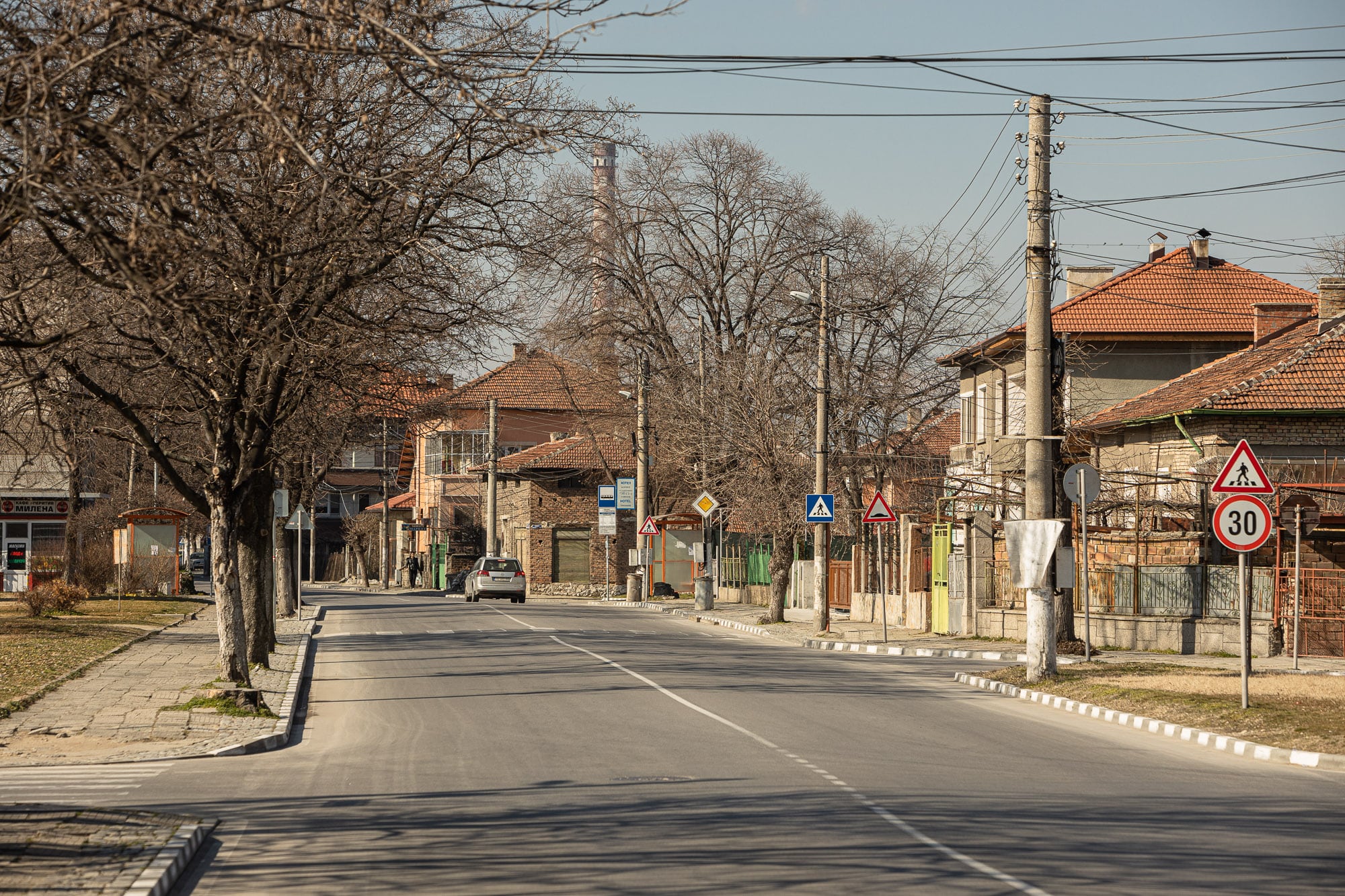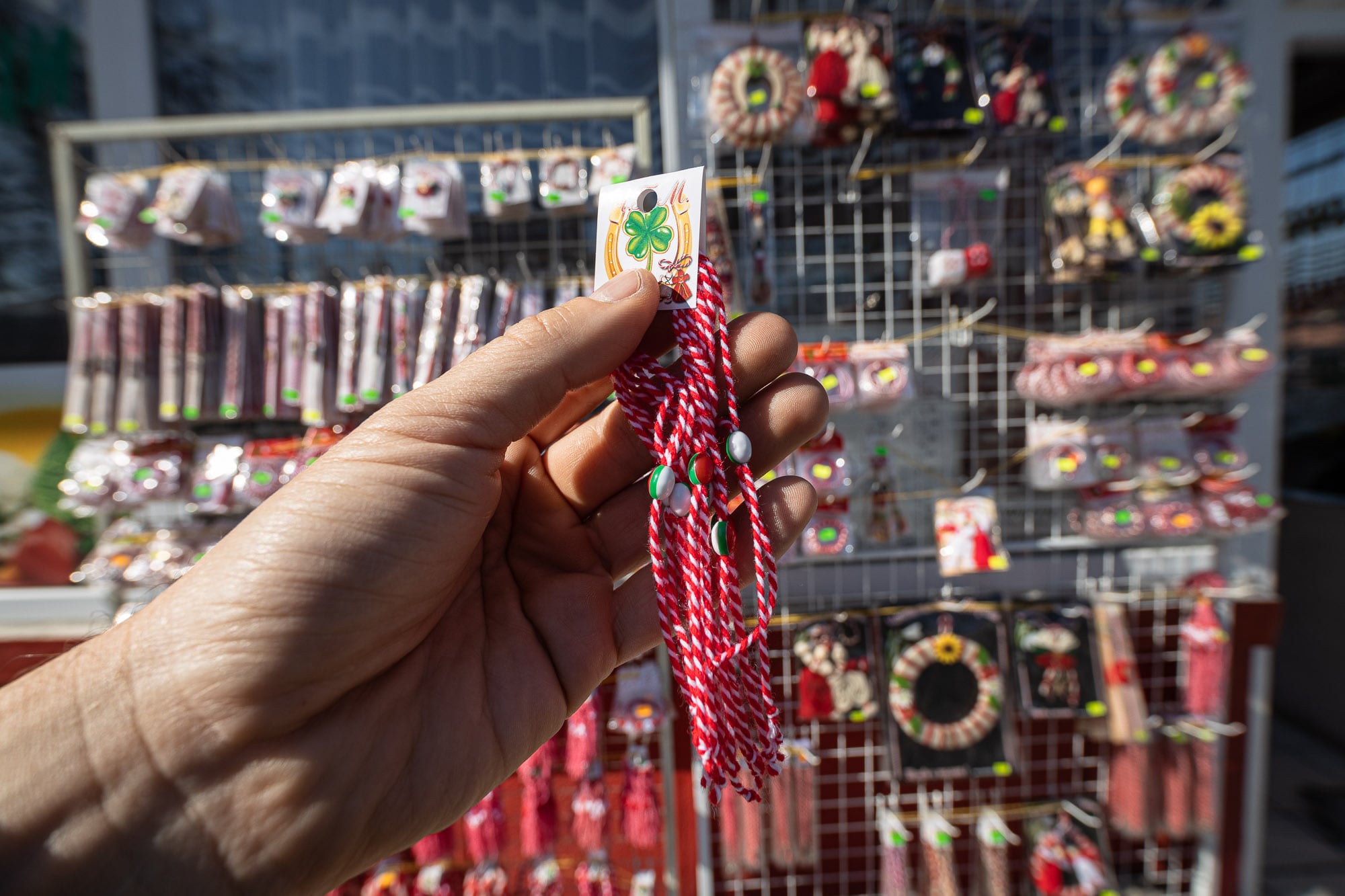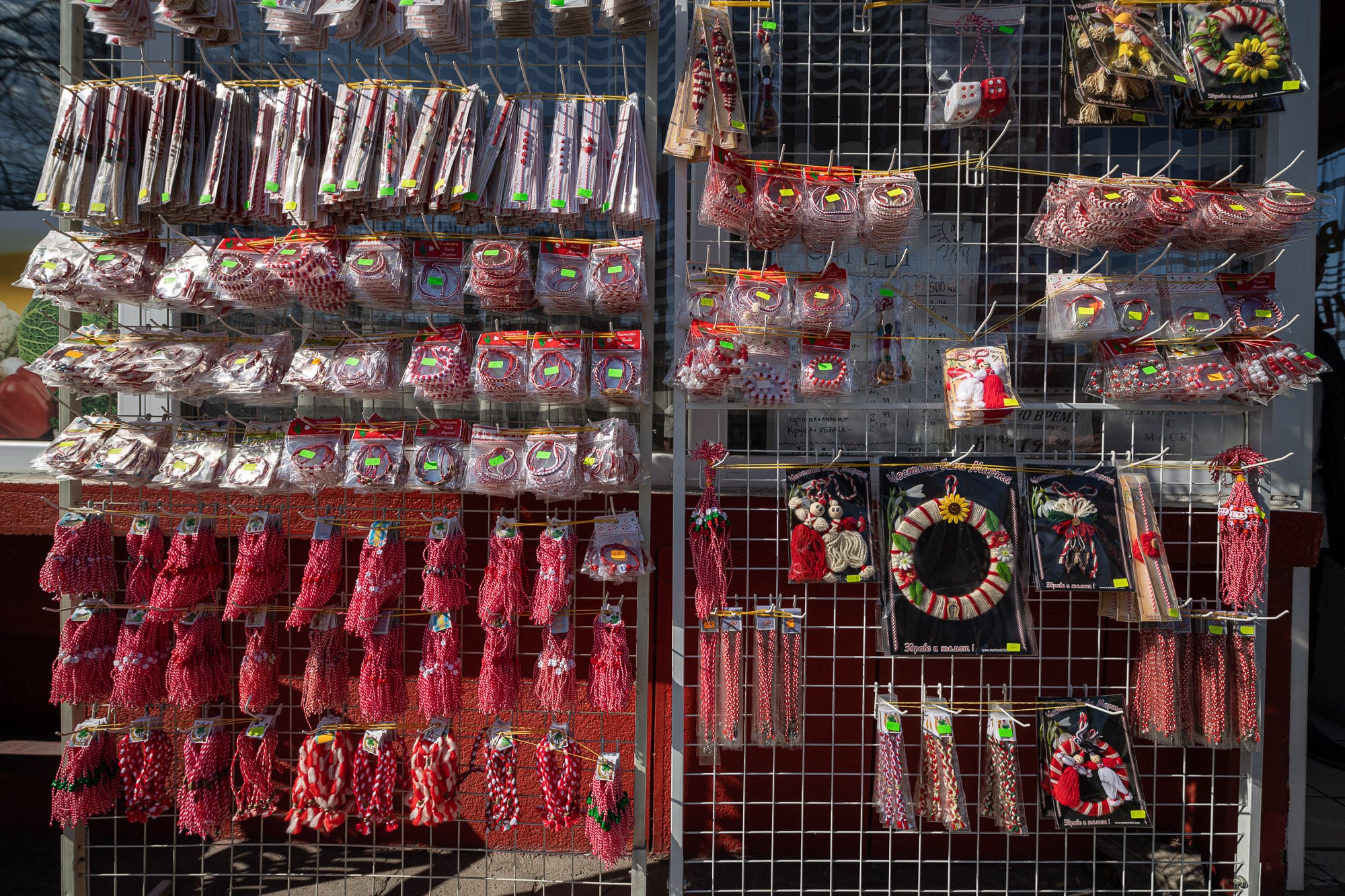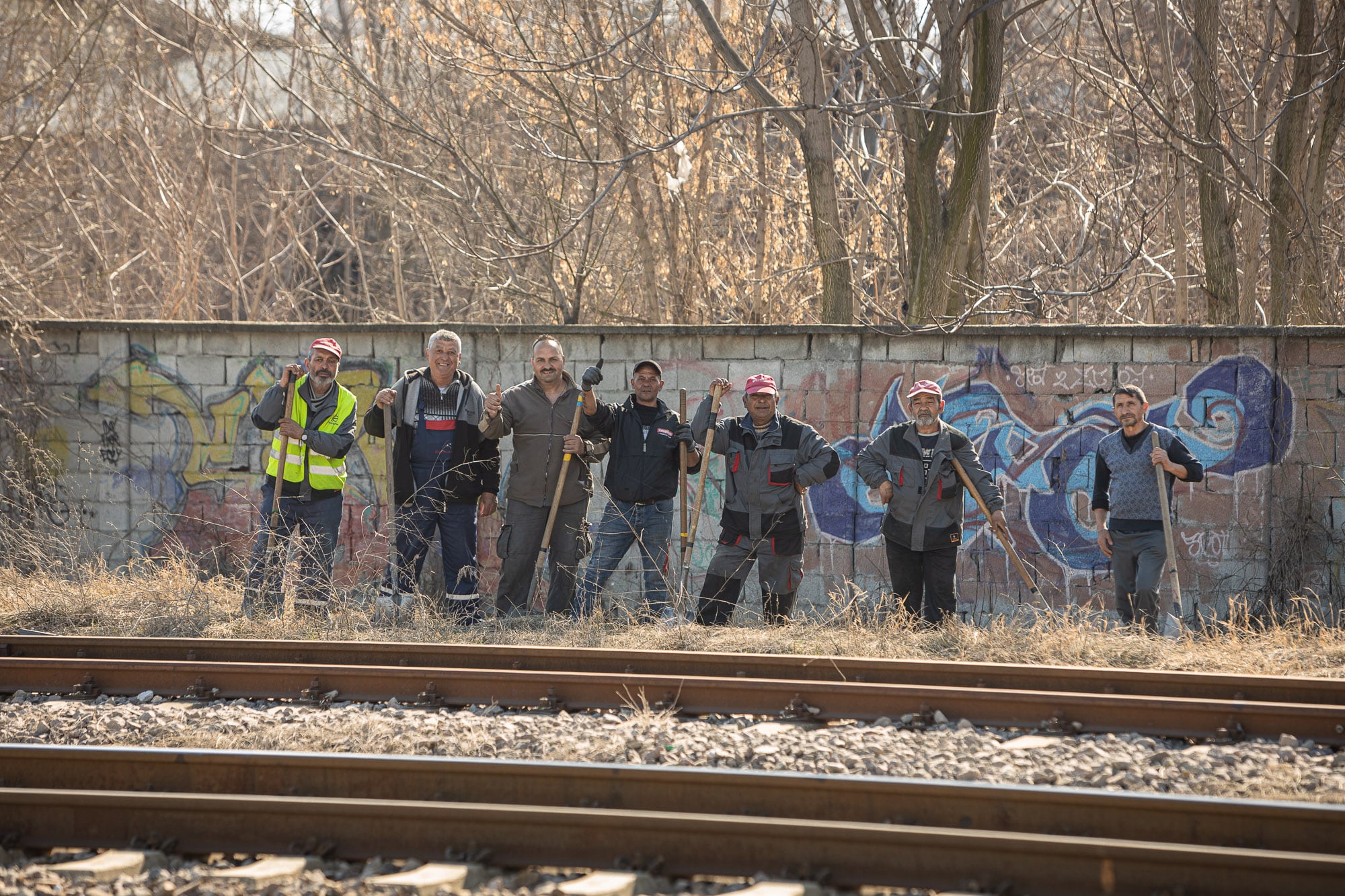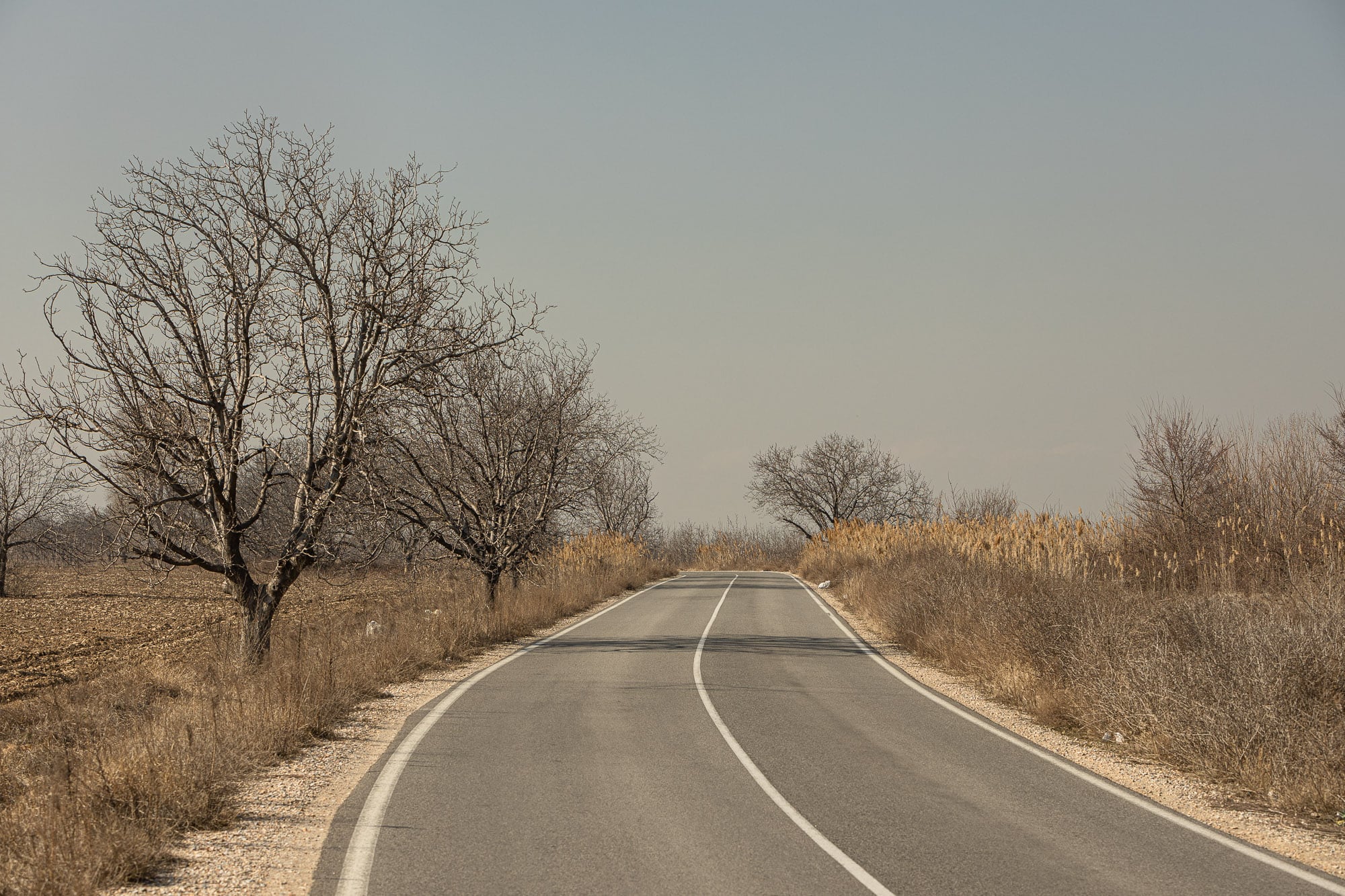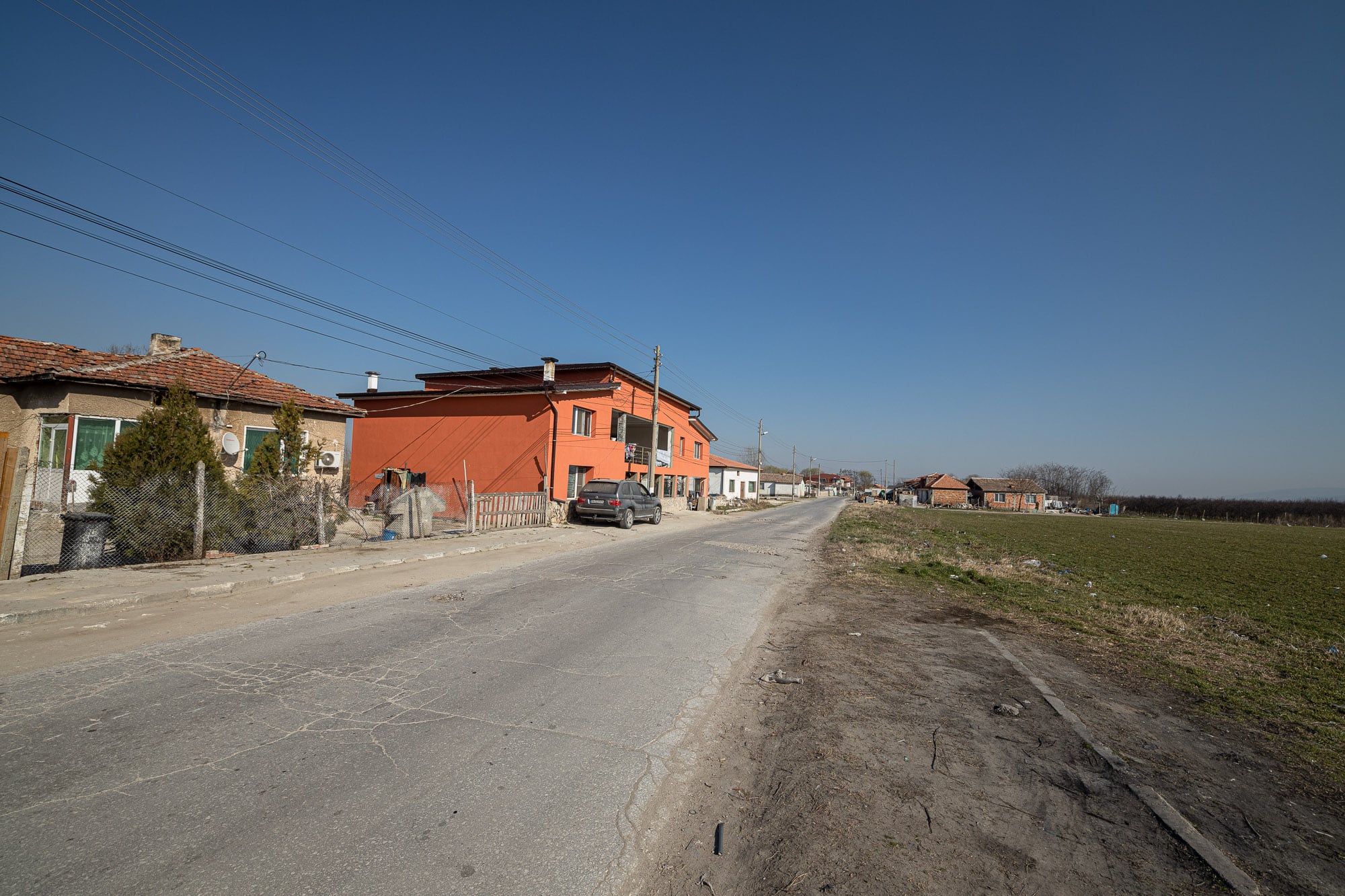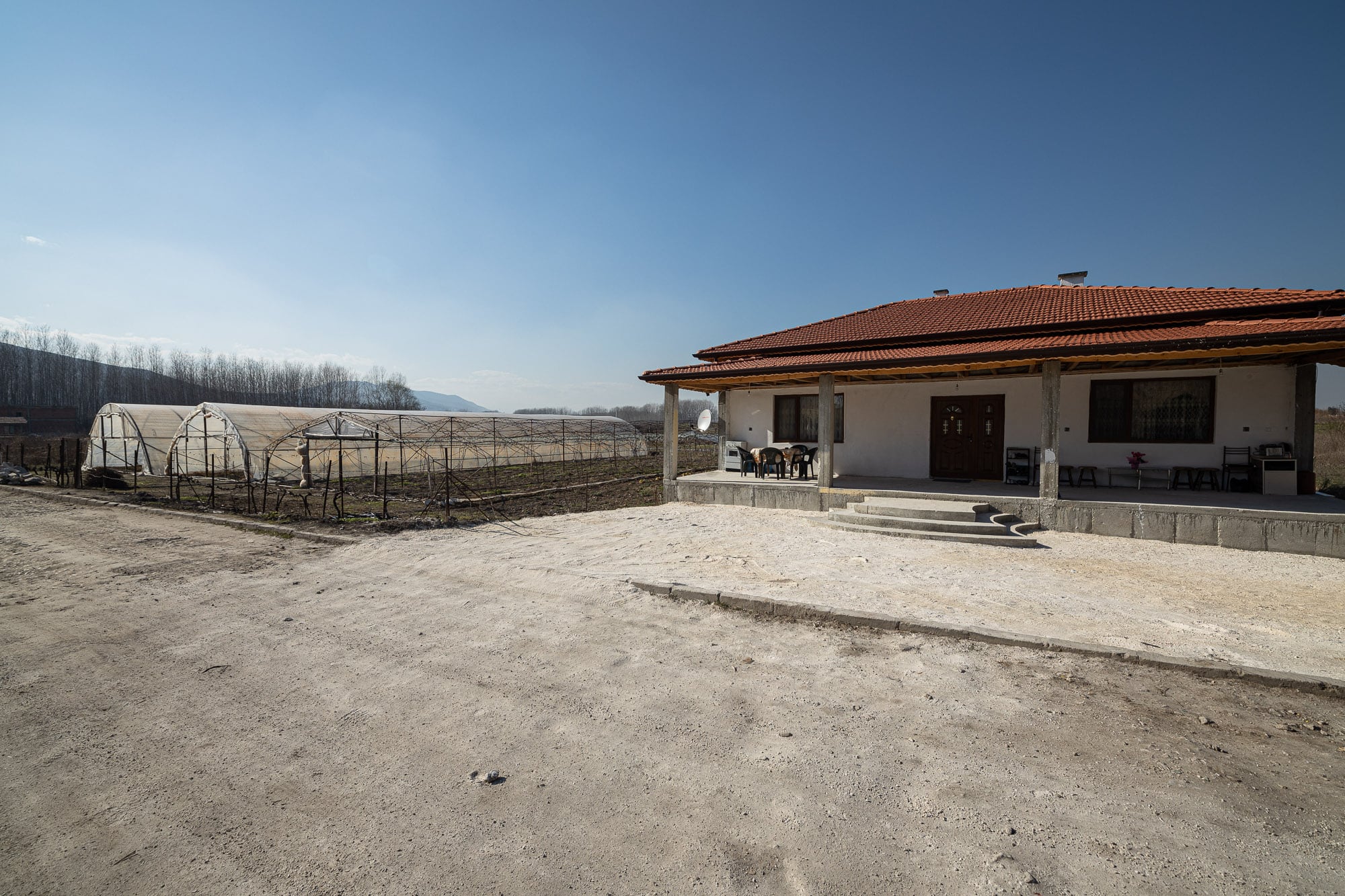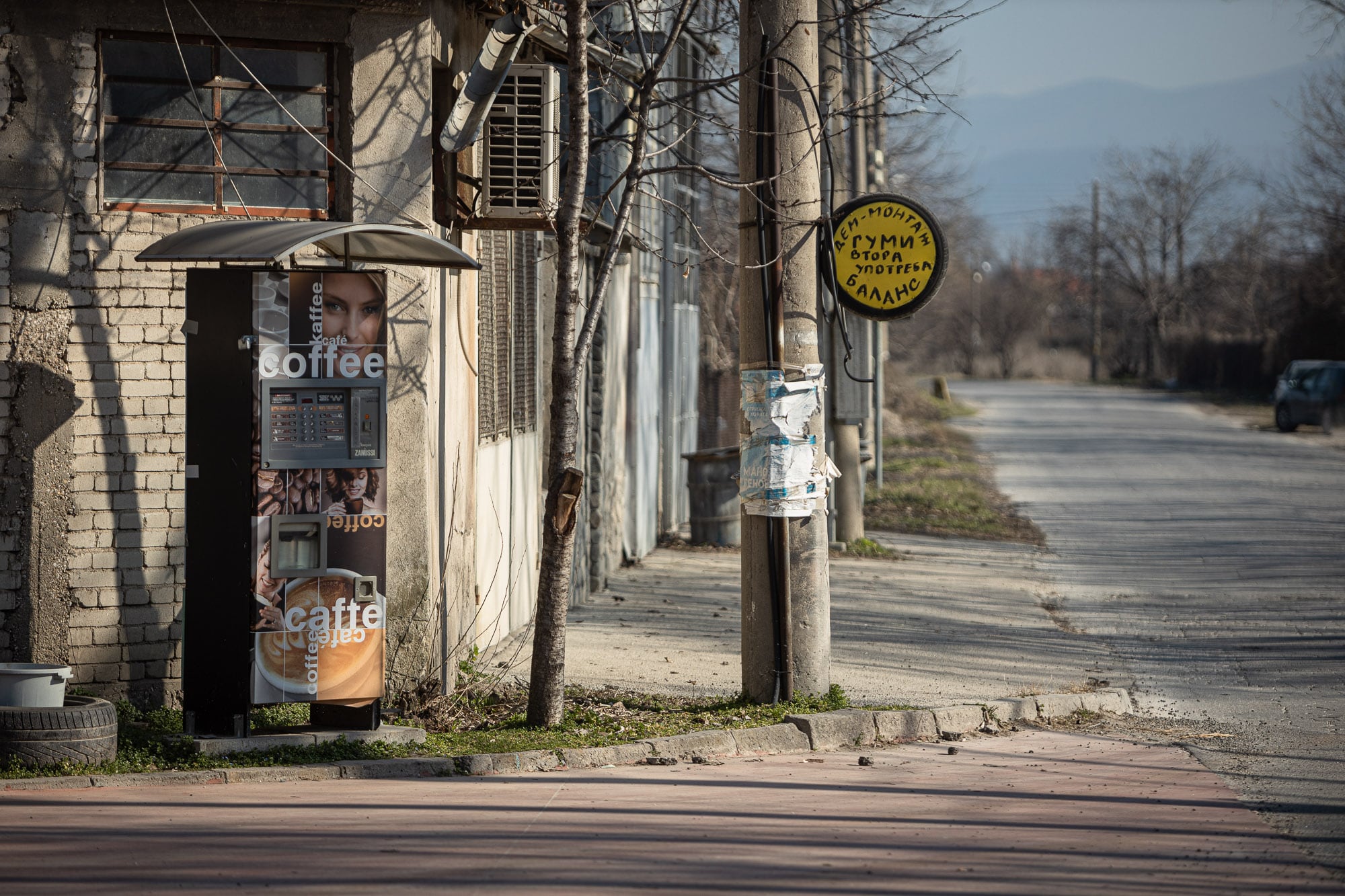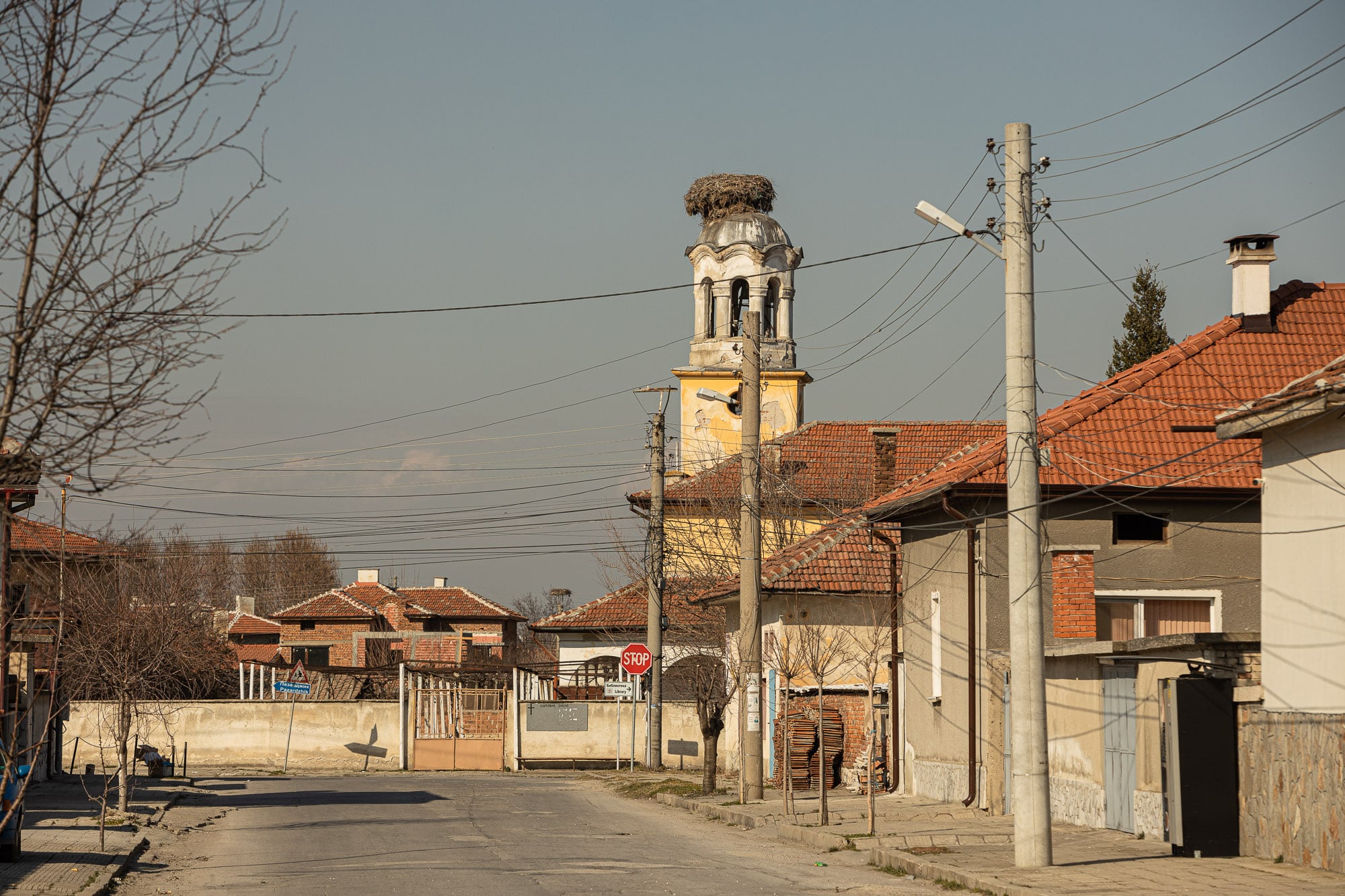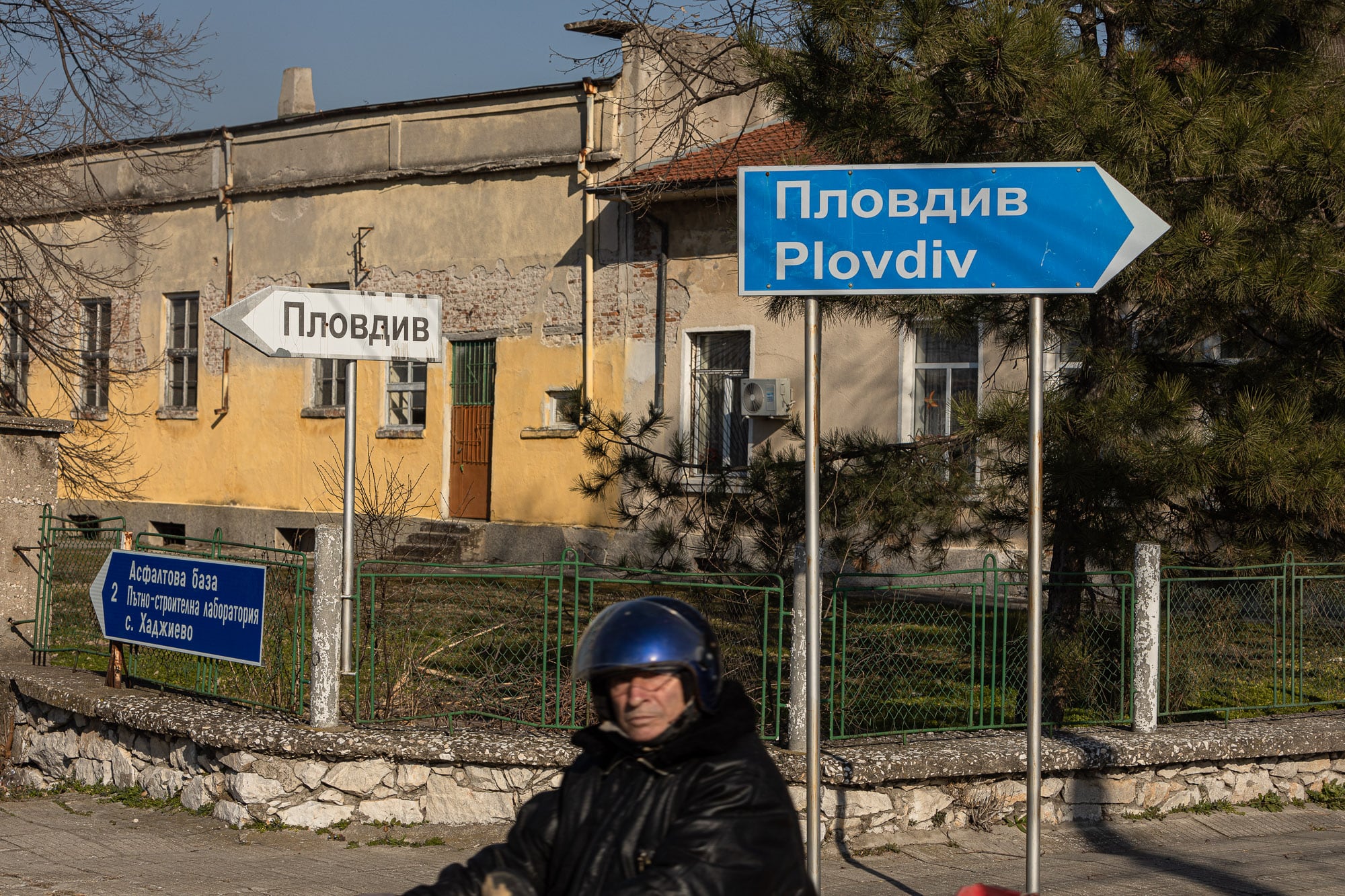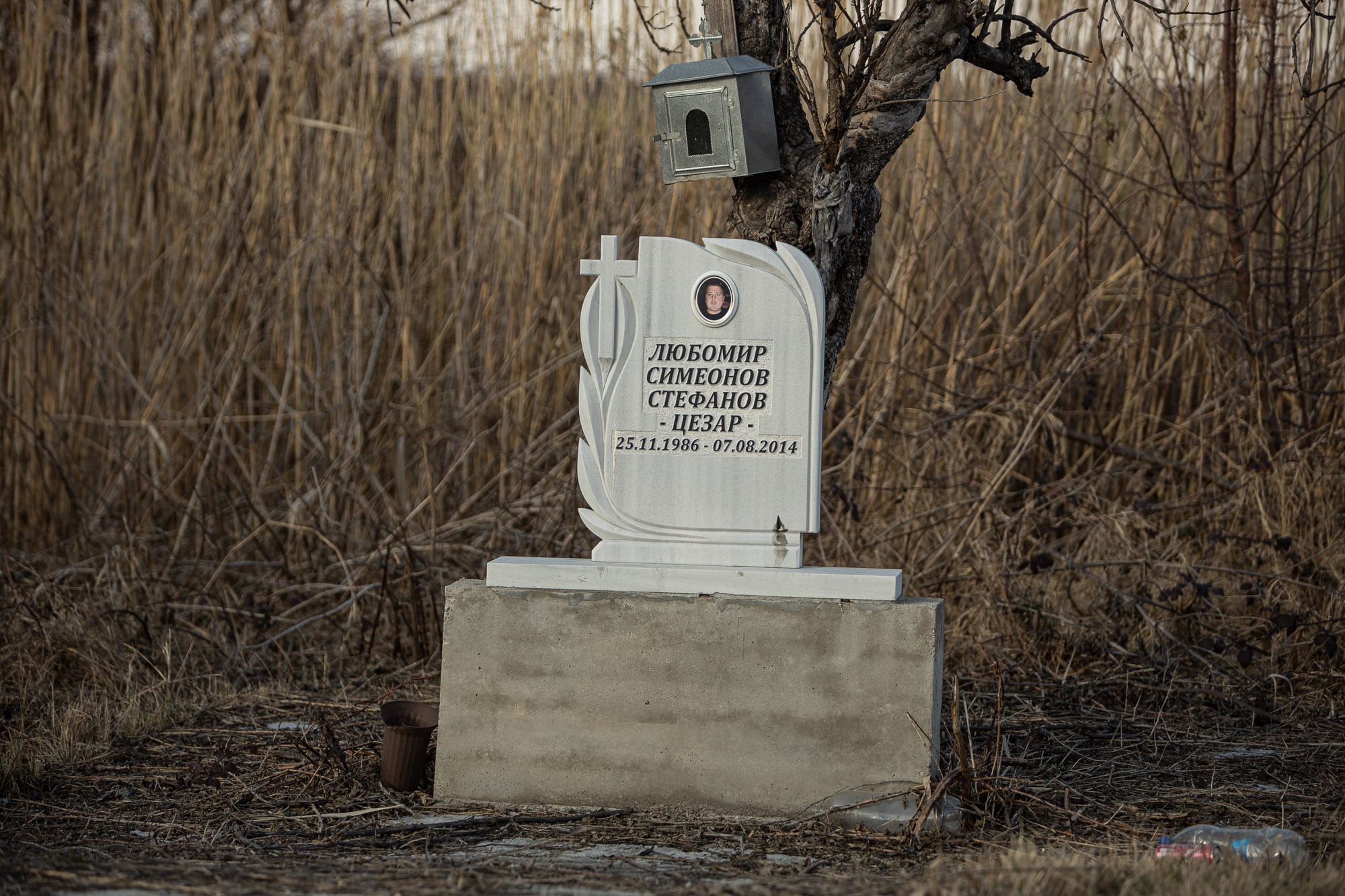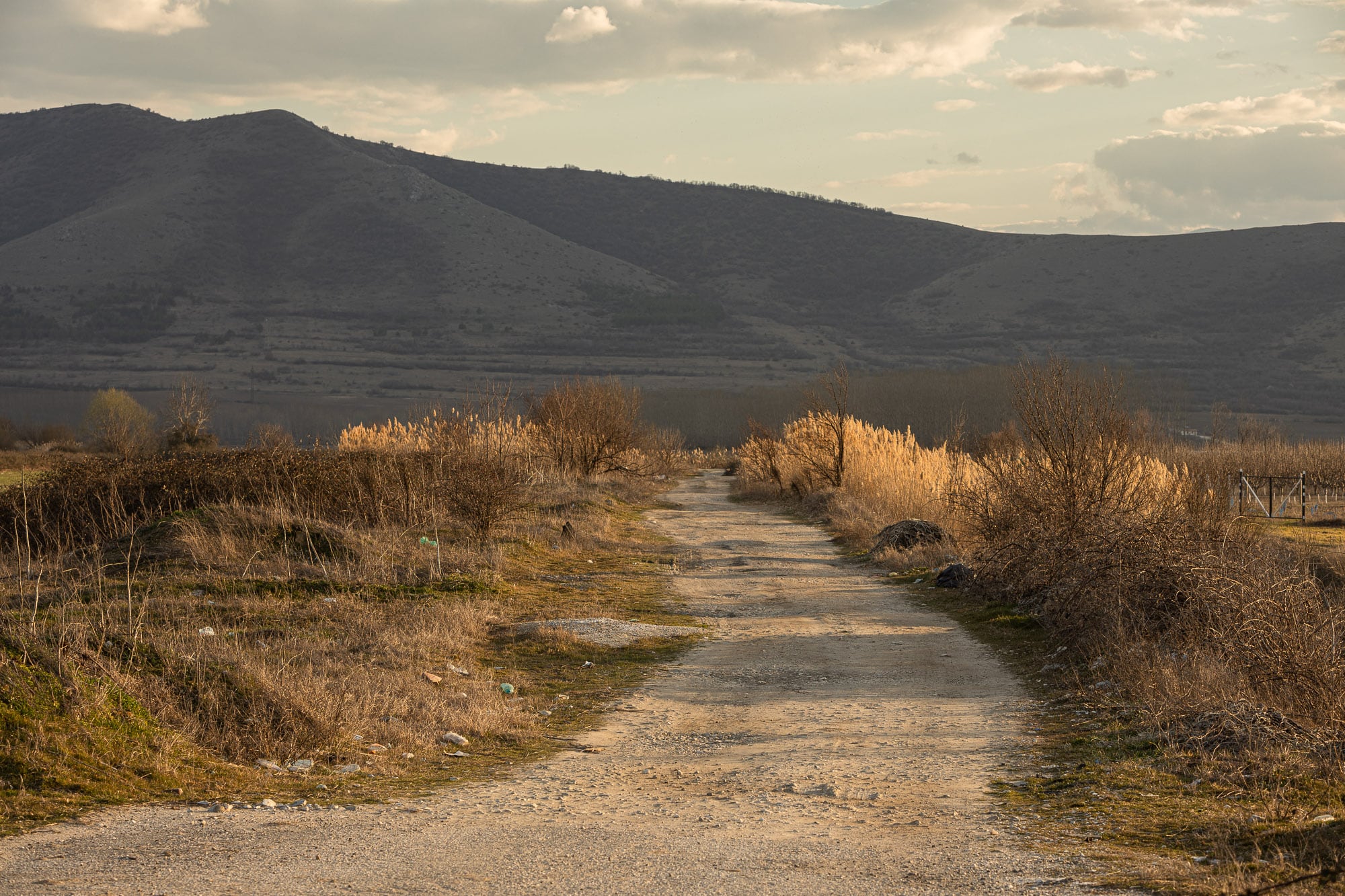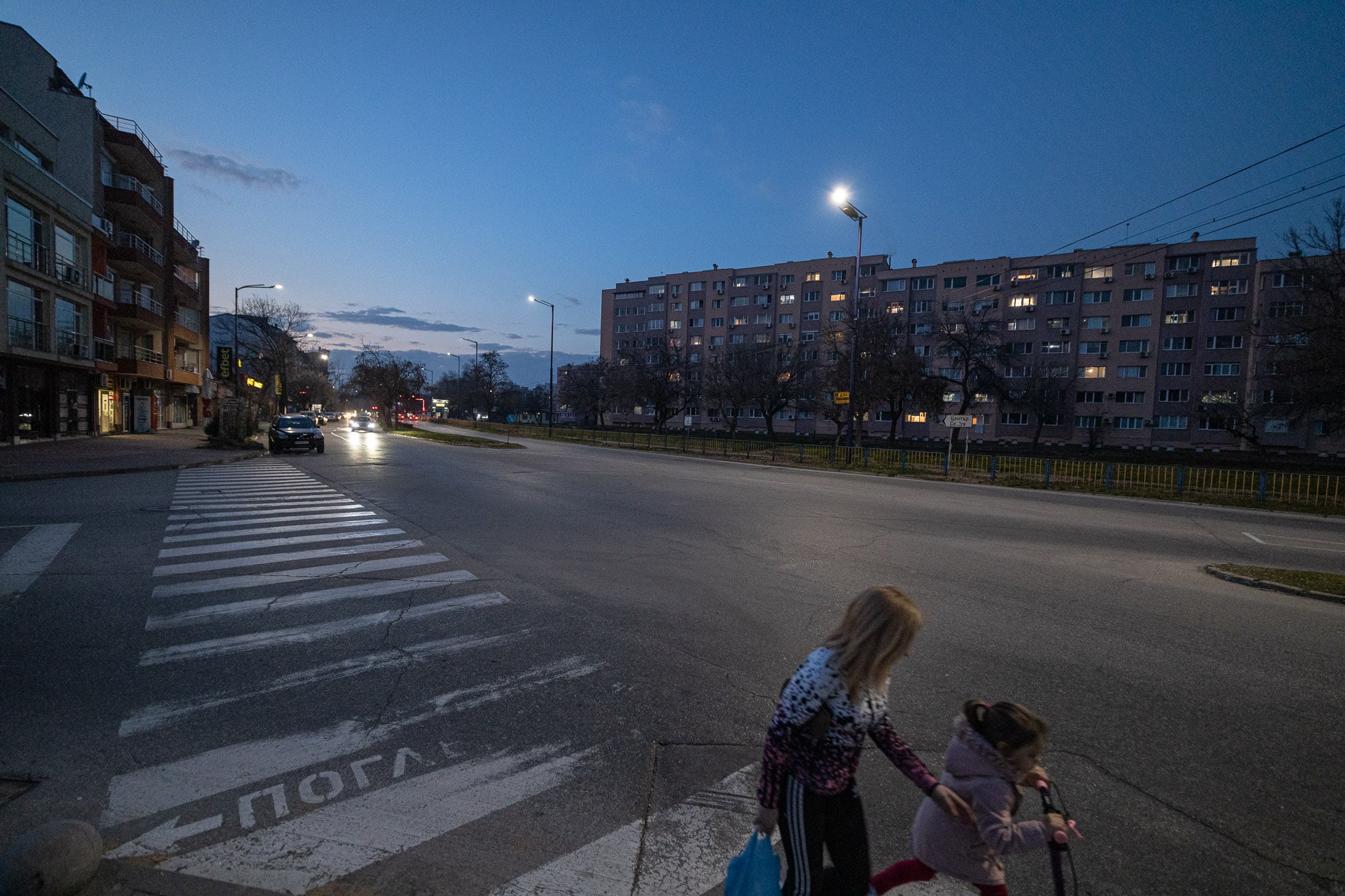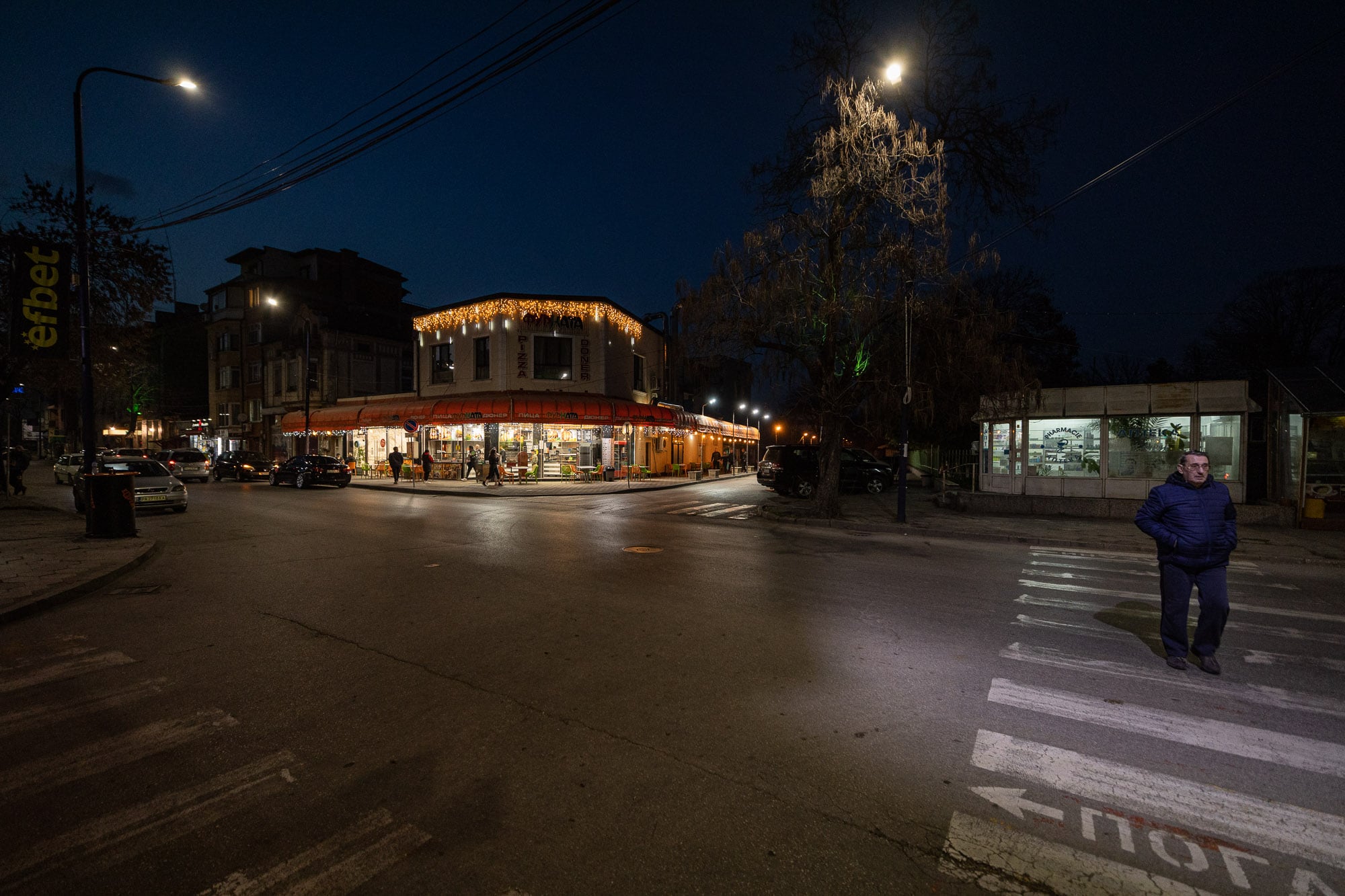good villages
This post is about a 24km walk from Stamboliyski to Pazardzhik. I learn about martenitsi and pass through an interesting village.
When I started walking I finally understood why something had felt off about this place: Stamboliyski was a town that had been cut in two. The railroad tracks went right through its center, creating two separate parts, and I had to take a long detour over a bridge to get to the northern side.
martenitsa
When I noticed a shop that was selling little red and white adornments I stopped. I had seen these exact same things before in the center of Plovdiv, and I had figured that they were probably just some sort of tourist souvenirs. But what were they doing here, in the northern half of this little town?
I asked the lady who owned the shop about it, and she explained that these were martenitsi. Every year on the 1st of March, Bulgarians put these little adornments on their wrists in order to celebrate the beginning of spring. They would take them off after a while, usually once they had seen their first stork of the year, or a fruit tree in bloom. Then they would hang their martenitsa on a tree to bless it.
And I remembered that I had seen just that a while ago: little red and white adornments hanging from the twigs of a tree. They had been martenitsi from the year before.
Bulgarian villages
I arrived in an interesting village after that. It was different from the various types of settlements that I had seen so far:
- Bulgarian villages seemed to be mostly quiet, there weren’t that many people hanging around outside, and often there were some abandoned buildings.
- Romani settlements were lively, with lots of people outside. Buildings generally looked worse than in Bulgarian villages, and there was usually a considerable amount of trash everywhere.
- Turkish villages were not as quiet as the Bulgarian villages and not as lively as the Romani ones. The buildings generally looked very well-kept. There was always a mosque.
Of course no village was 100% homogenous, and many were very mixed, but generally, these seemed to be the categories that I had observed.
Turkish without a mosque?
Trivoditsi was different, though. The houses were well-kept and the streets were clean, but there were a lot of people outside. Some seemed to be just hanging out while others were working on their homes. One time I passed a greenhouse where three young men were packing up spring onions. They were listening to music that sounded Turkish to me. Everyone waved back when I said hello. A few people were sitting around a table in the sun. I decided to ask them about the village.
They smiled at me, but it turned out that I didn’t get anywhere with English, Russian, or the translation app. In the end I tried a few words I knew in Turkish.
Here: Turk? I asked them.
“Yes,” they said.
Where: Mosque? I asked.
“No mosque,” they said, “Pazardzhik!”
Pazardzhik was the next town.
I was still confused about the village when I got back to the main road and saw a recycling yard. Some guys were working with scrap metal. We waved at each other, and one of them came over. He spoke a bit of English and a bit of Russian. We talked about where I was going (Pazardzhik), and he explained the way in great detail.
When I told him that I liked the village of Trivoditsi, he smiled, pointed at himself and then at the village. Then he said: “Romani.”
pictures
The northern part of Stamboliyski:
Bundle of martenitsi:
Martenitsi for sale:
Railroad workers near Stamboliyski:
The road to walk from Stamboliyski to Pazardzhik:
Beginning of Trivoditsi:
Greenhouses in Trivoditsi:
There cannot be a street corner without a coffee machine in Bulgaria:
The church of Hadzhievo:
All ways lead to Plovdiv:
Memorial to Lyubomir near Hadzhievo:
Afternoon sun on the way:
Arriving in Pazardzhik:
Pazardzhik at night:

